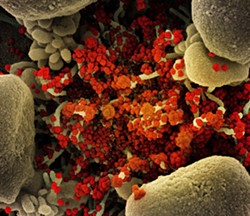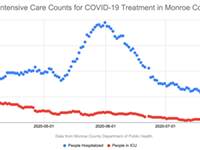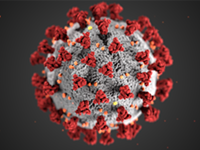[
{
"name": "500x250 Ad",
"insertPoint": "5",
"component": "15667920",
"parentWrapperClass": "",
"requiredCountToDisplay": "1"
}
]
About a quarter of the COVID-19 cases diagnosed in Monroe County recently are imported, according to the county public health department.
Local epidemiologists said that’s much higher than the proportion a couple of months ago, when community spread was responsible for the vast majority of known cases in the county.
The shift isn’t limited to Monroe County. In Erie County, where Dr. John Sellick specializes in infection control at the University at Buffalo, the local health department said contact tracers there are also seeing a common history of travel in their new COVID-19 cases.
Sellick said asymptomatic and presymptomatic transmission of the novel coronavirus is leading people who feel well to unwittingly carry the virus into New York.
“The problem is we don’t know if you have infection,” Sellick said. “Everybody’s saying, ‘I’m not infected.’ You might be infected. We don’t know that.”
Sellick and local public health departments said the state’s quarantine requirement for travelers from states with high rates of infection can prevent people from seeding new clusters of COVID-19 in New York.
“There’s just an absurd number of cases in Florida, Texas, Arizona, and a number of other states,” said Sellick.
The Monroe County public health department said about half of the coronavirus cases it’s identified that have ties to travel are in people who have traveled to Florida.
Florida is one of 22 states from which New York now requires travelers to quarantine for 14 days after arrival.
Epidemiologists said New York has slowed virus transmission considerably, but it’s in a precarious position as one of only a few places in the country where the virus is under control.
“We are at risk for having a resurgence,” said Dr. Emil Lesho, the hospital epidemiologist at Rochester Regional Health. “We should not let our guard down.”
Sellick, like many public health experts, said efforts at containment should focus on education over enforcement.
New York requires travelers from the 22 states on its quarantine list to fill out forms providing contact and lodging information if they arrive at transit hubs, but that hardly seals the state’s borders.
“You can come into New York on the back roads, and no one’s going to know,” Sellick said. “So we’re looking to educate people on what the risks are so they do the right thing for the community.”
Brett Dahlberg is a health reporter for WXXI News, a media partner of CITY. He can be reached at [email protected].
Local epidemiologists said that’s much higher than the proportion a couple of months ago, when community spread was responsible for the vast majority of known cases in the county.
The shift isn’t limited to Monroe County. In Erie County, where Dr. John Sellick specializes in infection control at the University at Buffalo, the local health department said contact tracers there are also seeing a common history of travel in their new COVID-19 cases.
Sellick said asymptomatic and presymptomatic transmission of the novel coronavirus is leading people who feel well to unwittingly carry the virus into New York.
“The problem is we don’t know if you have infection,” Sellick said. “Everybody’s saying, ‘I’m not infected.’ You might be infected. We don’t know that.”
Sellick and local public health departments said the state’s quarantine requirement for travelers from states with high rates of infection can prevent people from seeding new clusters of COVID-19 in New York.
“There’s just an absurd number of cases in Florida, Texas, Arizona, and a number of other states,” said Sellick.
The Monroe County public health department said about half of the coronavirus cases it’s identified that have ties to travel are in people who have traveled to Florida.
Florida is one of 22 states from which New York now requires travelers to quarantine for 14 days after arrival.
Epidemiologists said New York has slowed virus transmission considerably, but it’s in a precarious position as one of only a few places in the country where the virus is under control.
“We are at risk for having a resurgence,” said Dr. Emil Lesho, the hospital epidemiologist at Rochester Regional Health. “We should not let our guard down.”
Sellick, like many public health experts, said efforts at containment should focus on education over enforcement.
New York requires travelers from the 22 states on its quarantine list to fill out forms providing contact and lodging information if they arrive at transit hubs, but that hardly seals the state’s borders.
“You can come into New York on the back roads, and no one’s going to know,” Sellick said. “So we’re looking to educate people on what the risks are so they do the right thing for the community.”
Brett Dahlberg is a health reporter for WXXI News, a media partner of CITY. He can be reached at [email protected].









